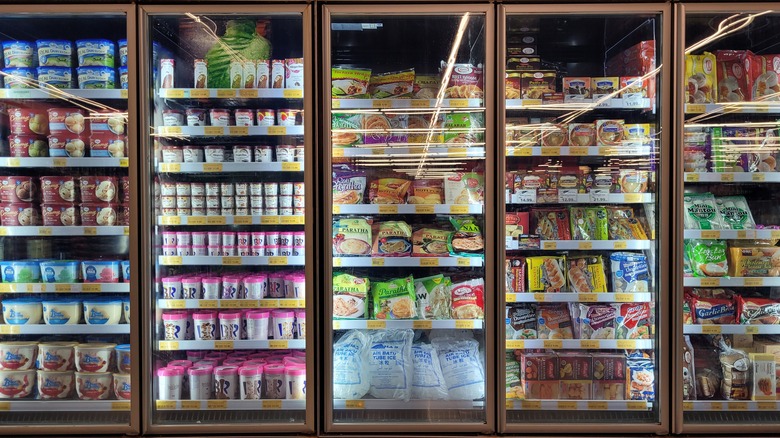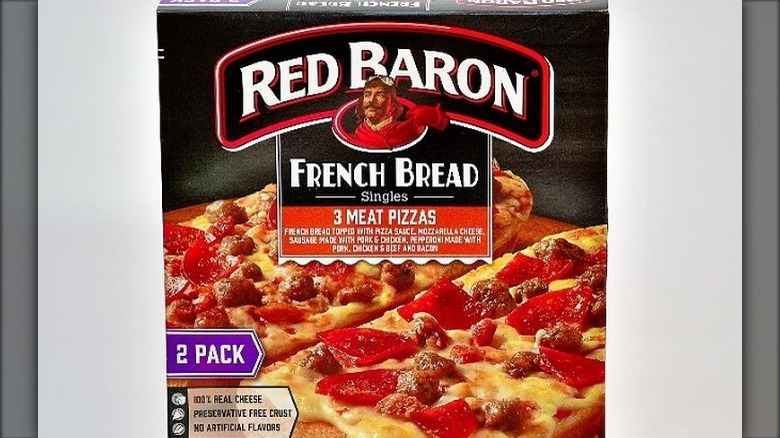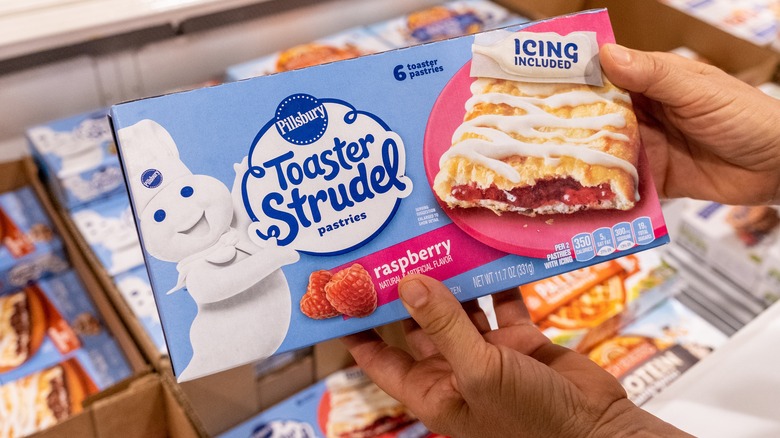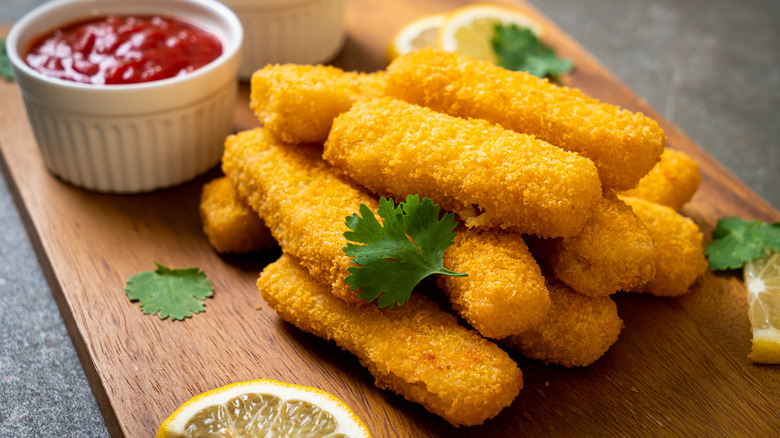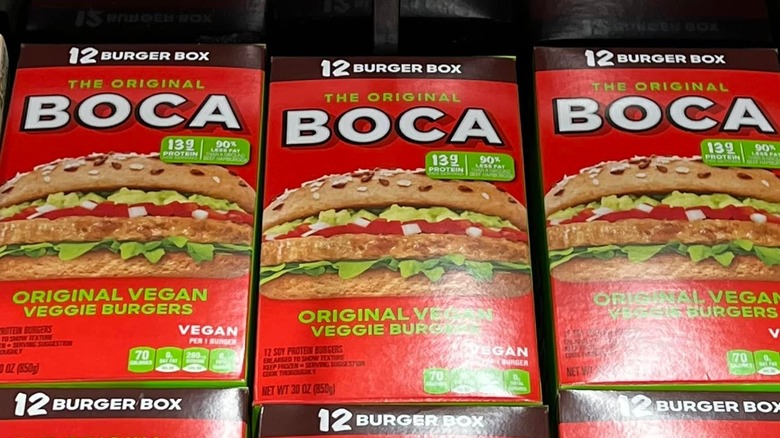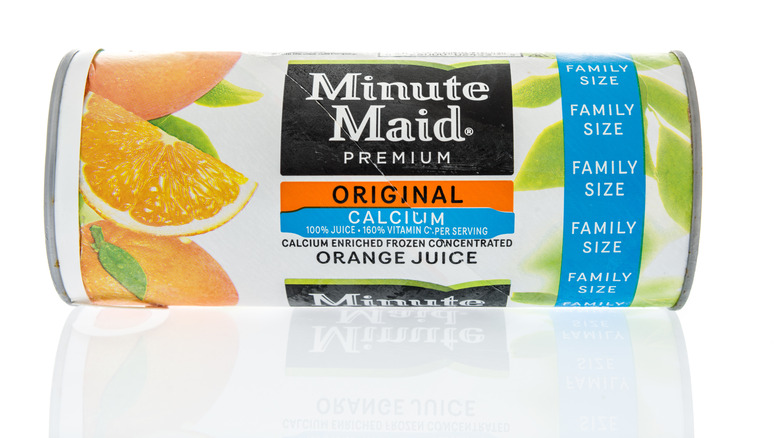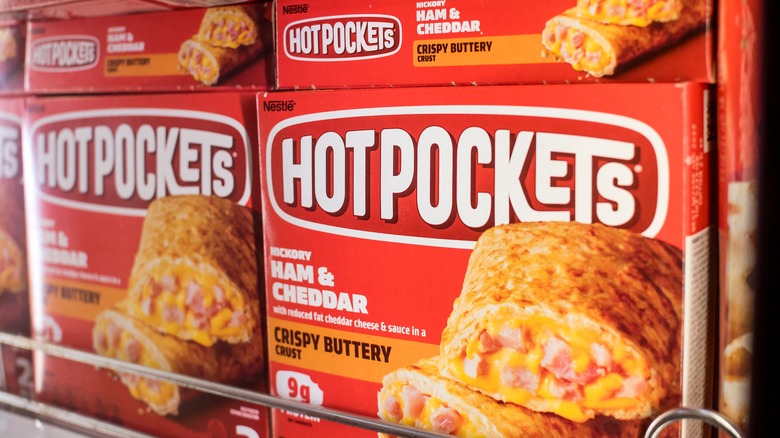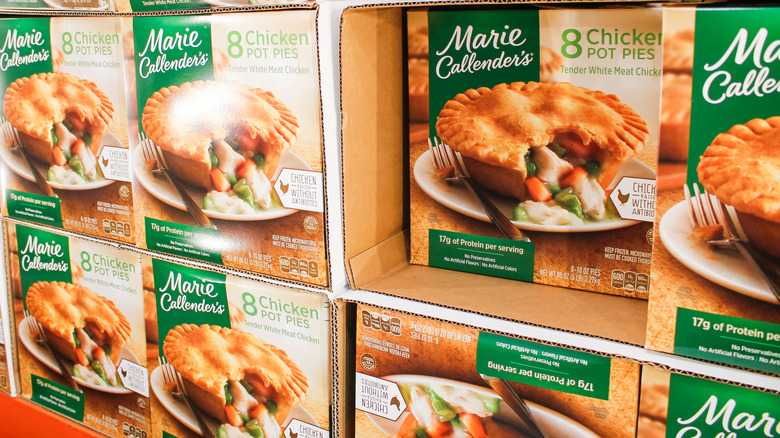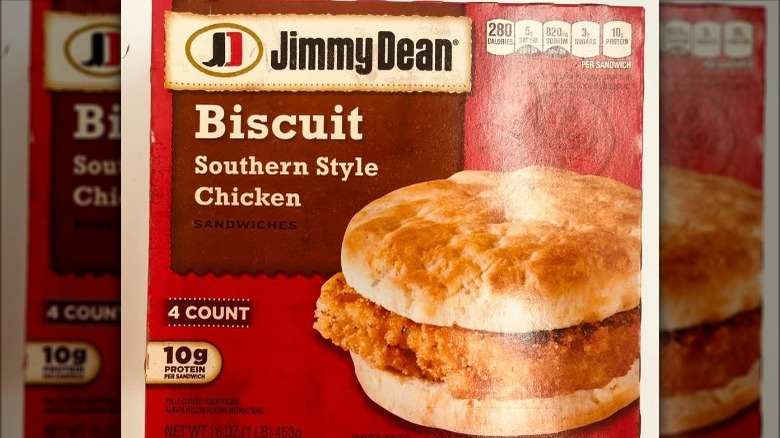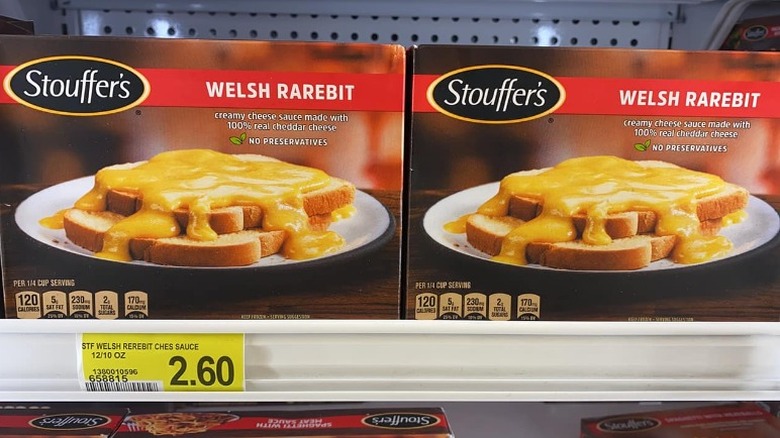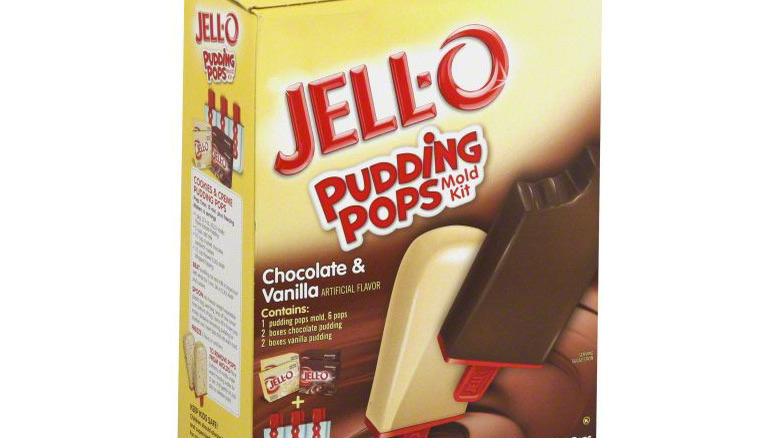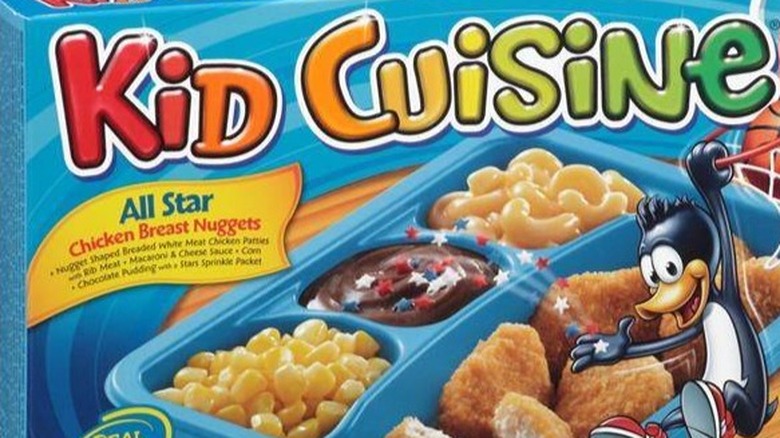Once Popular Frozen Foods That No One Eats Anymore
We may receive a commission on purchases made from links.
Frozen food would be something of futuristic imagination without Clarence Birdseye, the father of the method and founder of Birds Eye frozen foods. Birdseye took ancient preservation techniques dating back to 1000 B.C. in China and modernized them in order to package, transport, and sell frozen foods while maintaining their freshness (via Eater). That was in 1930, and since then, frozen foods have diversified from Swanson's inception of the TV dinner to the growing cultural phenomenon behind Trader Joe's expansive range of frozen meals, meatballs, mac and cheese, and other finger foods.
Sales in the frozen foods aisle saw an up-and-down trend from the 1950s to the 2010s, until the Covid-19 pandemic surfaced in 2020, Quartz reports. The outlet notes that sales of frozen foods in the U.S. reached 66 billion dollars in 2020 compared to the previous few years when sales maxed at 56 billion dollars. The perception of frozen foods changed as well, with a 2021 Deloitte survey citing that 57% of Millennials and Zoomers found that frozen meat was equitable in quality to fresh meat, compared to 39% of Gen X and Boomers.
With changing views, new products have flooded the market, leaving others to perish into oblivion. Unfortunately, some once-popular frozen foods have been left to the side due to production issues, supply shortages, or the availability of new tastier options.
Red Baron French Bread Pizza
Red Baron certainly wasn't the first company to perfect French bread pizza, but it quickly became the classic lazy dinner or late-night snack requested by both kids and adults. Schwan's Company released the Red Baron pizza brand in 1976 as its second pizza brand after launching Tony's in 1970. It was instantly recognizable, eventually monopolizing 70% of the frozen pizza market at schools within four decades (via Business Wire).
However, Kraft launched DiGiorno in 1995 which soon became the top-selling frozen pizza in the U.S. rivaling Schwan's (via CNBC). Red Baron continued to slip in sales through the 2010s as other brands grew. According to Statista, DiGiorno dominated frozen pizza sales from 2011 to 2017, reaching over a billion dollars in revenue, whereas Red Baron peaked at a little under 600 million.
Like most frozen foods, sales grew in 2020 compared to the numbers from five years prior. In fact, frozen pizza sales grew in 2021 to over 6 billion dollars compared to 4.4 billion in 2015 (via Statista). As of 2021, Nestlé-owned brands like DiGiorno and Tombstone had a 40% market share of the frozen pizza market, while Schwan's-owned brands like Red Baron followed behind at 21% market share (via Food Dive). Schwan's president of consumer brands, Brian Schiegg, noted that sales had increased in 2020 and highlighted that the company was working to revitalize its brand to match the growing competition and consumer needs.
Toaster Strudel pastries
Nothing makes a child feel more like a French pastry chef than icing a flaky Toaster Strudel (that's probably still cold in the middle). The Pillsbury treat was the dessert for breakfast that every kid counted on for their early morning sugar boost. Classic strawberry was a fan favorite, and assorted flavors surfaced over the years like apple, cinnamon roll, Boston cream, and s'mores, cementing its reputation as the not-so-healthy breakfast that people hated to love.
However, it may now be harder to find the once-popular breakfast food in the frozen aisle as a result of "acute supply shortages" and a struggle to meet the current demand for frozen goods (via CNN). General Mills told CNN that aside from labor shortages at production plants and supply chain issues, the major problem was in sourcing starches, oils, and packaging materials. In addition, the inflation of wheat prices has affected product costs, causing a rush to adjust ingredients to accommodate for possible shortages in the future. Don't fret though –– just because Toaster Strudels may be gone from some places, they have not been forgotten.
Fish sticks
Fish sticks might as well be the chicken tenders of the sea for picky kids and pescatarians alike. They rose in popularity during the 1950s due to smart marketing techniques that labeled them as a new fish food with no bones, no waste, and less of a fishy flavor (via The Atlantic). Though they are praised for their excellent source of protein, most fish sticks are made with cod or pollock, which aren't as rich in healthy omega-3 fats, as well as batter laced with trans fats and high levels of sodium (via Oprah.com). Despite your stance on fish fingers, conflicts between Canada and the U.S. could make it harder to come by them at your local store.
According to Newsweek, transporting Alaskan pollock has been a slippery slope between Canada and the U.S., since the catch needs to be transported and shipped through Canada before crossing into the U.S. The U.S. Customs and Border Protection accused Canada of some missteps in the process, causing 26 million pounds of pollock used for fish sticks to be held in Canada until the legal matter was settled. Even though the fish eventually made it to the U.S., industry spokespeople fear permanent supply chain issues that could hurt an industry that has already been hit by high frozen food demands, raw material supply chain disputes, and job layoffs due to the Covid-19 pandemic (via Newsweek).
Boca burgers
Labeled as the original vegetarian burger, Boca Burger was the forefather of plant-based patties made for vegetarians and carnivores alike. The all-American BOCA Burger was originally conceptualized as the Sun Burger at a restaurant in Boca Raton, Florida, in 1979. The idea was then bought and rebranded by Kraft (via Food Business News). Now, as the battle for the best plant-based burger fuels the increasing demand for more vegetarian options, Boca burger has been left to accumulate dust in the frozen food aisle.
With plant-based brands like Impossible Foods and Beyond Meat popping up in the late 2000s, the once-popular and unparalleled Boca burger has been slow to catch up to the competition. Impossible Food's revenue sits at about one billion dollars –– the highest revenue of any plant-based substitute company — while Beyond Meat comes in second at around $464 million dollars. Boca Food's sales, on the other hand, hover under five million dollars.
Despite falling behind the competition, the Boca brand has tried to stay relevant, expanding its selection with the introduction of plant-based chicken and the aim to appeal to flexitarians as opposed to only vegan or vegetarian consumers (via Food Business News).
Frozen orange juice concentrate
In the early days of packaged orange juice, producers struggled to find a way to transport it across the country without spoilage. In the 1940s, scientists discovered that by removing the liquid, they could make frozen orange juice concentrate, which was the ideal format to ship WWII soldiers their daily dose of vitamin C (via National Museum of American History).
Aside from its affordability, frozen orange juice concentrate is rich in nutrients, although it lacks the fiber found in whole fruit and often has added sugar and preservatives (via Healthline). As such, it began to dwindle in popularity in the 1980s due to the emergence of no-concentrate orange juice, which was believed to be healthier, Vice explains.
As The Wall Street Journal reported in 2016, decreasing consumer demand for frozen orange juice concentrate, diseases affecting orange tree growth, and problematic crop-destroying weather contributed to a reduction in producers. Americans drank less orange juice in 2015 than any year, and Florida groves had a record low for orange production that year. Furthermore, consumers continue to prioritize fresh juice, drinking 19 million gallons per month compared to 1.4 million of frozen concentrate.
Hot Pockets
How can one think about Hot Pockets without humming the iconic jingle in their head? Invented in 1980 as the Tastywich, Hot Pockets was conceptualized by two immigrant brothers seeking to achieve the edible American dream (via Saveur). When the company was sold in 2002 to Kraft, it became the nostalgic meal and late-night munchie food for kids, overworked adults, and stoned college students. Hot Pockets have grown over the years to include regular breakfast pockets, big & bold pockets, and Deliwich snacks. Despite their former popularity, food recalls and production plant issues have since pulled many Hot Pockets off the shelves.
In 2015, Nestlé pledged to remove artificial flavors and reduce sodium from products such as Hot Pockets in response to growing concerns over fast food and frozen foods contributing to the obesity epidemic. Despite some positive changes, Hot Pockets hit a few roadblocks such as a recall of pepperoni pockets due to glass and plastic contamination in 2021 (via U.S. Department of Agriculture). Nestlé was hit hard again by a factory fire in 2022 that halted production, delaying plans to expand the space to accommodate an increase in Hot Pockets manufacturing (via Food Business News).
Marie Callender's pot pie
Marie Callender's began in the 1940s when Marie herself started selling pies at local restaurants in Orange County, California. By 1969, the pie shop became a full-service restaurant, and today, 27 of them are still open in the United States. Additionally, frozen savory and sweet pies are available at grocery stores across the country. Over the years, Marie Callender's has struggled to stay afloat due to bankruptcy and supply chain disruptions, placing the signature pie in jeopardy of disappearing from freezer shelves.
After merging in 2006, Perkins and Marie Callender's split up in 2019, with the latter company sold off for the low price of 1.75 million dollars after two bankruptcies (via Restaurant Business). In late 2021, CNN Business reported that Marie Callender's was one of many food companies experiencing issues in the frozen food aisle, citing "labor, commodity, and transportation constraints throttling supply chains." Many of the 10 to 15-ounce pot pies lacked sufficient packing materials, eventually causing disruptions from production to distribution. What was once a quintessential cookout dessert and family pot pie is now victim to another case of supply chain shortages.
Jimmy Dean chicken biscuits
It all began when the spot where Jimmy Dean frozen chicken biscuits once sat on the shelves remained empty last year. On the company's website, consumers wrote reviews about recent changes in the recipe and the fact that the biscuits were becoming harder to find. In 2014, Tyson Foods bought Sara Lee-owned Jimmy Dean Meat Company, making it the sole provider of most frozen and fast-food chicken, including Jimmy Dean chicken biscuits (via Home Kitchen Talk). Unfortunately, the once-popular frozen breakfast began disappearing from shelves due to Tyson Foods' chicken shortage (via CNN Business).
According to CNN, Tyson Foods decided to use a different type of rooster to augment breeding and improve the quality of its meat. However, the plan backfired as the number of hatchlings was far lower than anticipated, resulting in a significant decrease in chickens. Meanwhile, other factors such as deviating Texas weather and increasing demand for chicken sandwiches in the frozen aisle and at chain restaurants caused the demand to surpass the supply.
Stouffer's Welsh Rarebit
Stouffer's Welsh rarebit has no rabbit in sight, but it does contain a deliciously savory helping of cheese, making it arguably better than any meat dish. Also known as Welsh rabbit (per Britannica), the dish consists of toasted bread topped with melted cheddar cheese or cheese sauce made with beer, Worcestershire sauce, and paprika. The traditional British pub dish probably originated when Welsh peasants used cheese as a substitute for less affordable meat.
Stouffer's Welsh rarebit was a discount TV-dinner version of the pub classic with a surprisingly impressive cult following. In a Facebook post on Stouffer's page, fans questioned the product's disappearance, to which Stouffer's commented that it had discontinued it in April 2021. The reasoning behind the decision was vague, citing that "when a product is retired, it is not done impulsively [...] we take into account many factors such as purchasing patterns throughout the country." Despite the high morale, fans on the page seemed disheartened that their once microwavable comfort food would no longer be on freezer shelves.
Jell-O Pudding Pops
Jell-O Pudding Pops are iconic. Back in the '80s and '90s, you would have been hard-pressed to find a freezer that didn't contain a box of Jell-O pudding pops. Sure, the product's spokesman was ... tremendously problematic in retrospect, but these delicious frozen treats had all the familiar sweetness of a Jell-O pudding cup, with a smooth, satisfying texture. In fact, they raked in over $300 million a year for General Foods just five years after launching (via "What Were They Thinking?"). Surely a pop this classic and delicious could never fall out of style. So why is it that they're impossible to find nowadays?
The love for Jell-O Pudding Pops still carries on to this day. According to Yahoo, there are an average of 3,600 Google searches for "jello pudding pops" every month. Sadly, their search is in vain as these pudding pops were slowly phased out in the early aughts. The reason? Surprisingly it wasn't because Bill Cosby had tainted the brand beyond repair. It was because they weren't profitable (that's hashtag capitalism, babe.) Despite their popularity, General Foods was actually LOSING money making these. They tried to salvage them by licensing the Jell-O Pudding Pop brand to Popsicle, but it just wasn't the same and sales slumped. Nowadays, if you want to get your Jell-O Pudding Pop fix, you're gonna have to make them yourself.
Kid Cuisine Frozen Dinners
Kid Cuisine was a frozen TV dinner specifically marketed towards kids. Launched in the 1990s, and known as the "Happy Meal" of frozen food, they served the double purpose of being fun and appealing to kids, and easy and cheap for parents (via Brand Informers). Anyone who's tried to get a picky kid to eat their dinner knows that this is a real win-win.
While you can still buy Kid Cuisine frozen dinners in some grocery stores, if you Google the words "kid cuisine" you'll come to find results like, "Are kid cuisines discontinued" and "whatever happened to Kid Cuisine?" So it's safe to say these frozen meals have fallen out of favor. In fact, this poll from 2020 shows that a vast majority of Americans haven't eaten a Kid Cuisine in the last month.
Sales started to stagnate and slump around 2008, and some analysts think the dip in frozen dinner sales is due to the fact that prices have risen, coinciding with a time when people, particularly parents, are more focused on eating healthy (via Cheddar). And the issue with a frozen dinner like Kid Cuisine is that it's perceived to be unhealthy, which matters more than whether or not they actually are.
However, frozen foods seem to be having a big rebound moment and sales are on the rise, likely due to the pandemic changing how people cook and eat at home (via Quartz). Plus, lots of brands are innovating the products offered and making them healthier. So here's hoping Kid Cuisine can hop on the health train too!
Baked Alaska
Baked Alaska is essentially the turducken of desserts. Cake and ice cream baked inside a protective shell of meringue, it was all the rage in the '50s when ice cream pies were having a real food fad moment (via Houston Press.) The fact that ice cream gets baked and still doesn't melt makes the Baked Alaska feel like both a party trick and a delicious dessert in one. But you rarely see it on dessert menus anymore. In the age of molecular gastronomy, for some reason, Baked Alaska has fallen out of favor.
The Baked Alaska was developed all the way back in the 18th century when scientist Count Rumford realized that the air bubbles in meringue acted as a great insulator, allowing ice cream to be baked inside without turning into soup (via NPR). Years later in 1867, as a nod to the United State's recent purchase of Alaska, the famous pastry chef Charles Ranhofer at Delmonico's in New York City created the Alaska, Florida, a walnut cake with ice cream, baked inside a layer of meringue. The name was a nod to its cold/hot nature and later came to be known as the Baked Alaska. While you can still buy Baked Alaskas at Delmonico's, it's a sweet spectacle that perhaps feels a little too high-brow and too showy for today's culinary set.
